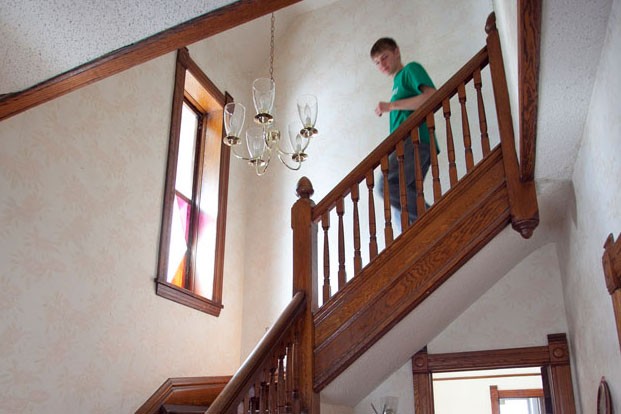Michael Trittipo has spent roughly a quarter of a century in his home in Southeast Como.
The house on 19th Avenue Southeast does not stand out among other buildings, and from the outside, it looks like “just another house on the street” he says.
But for Trittipo, and the neighborhood as a whole, it has a very special value.
Hubert H. Humphrey, who went on to become a U.S. senator and later vice president, lived at 890 19th Ave. SE while he was mayor of Minneapolis in the mid-1940s.
The buildingâÄôs historic ownership is not noted anywhere outside of legal documentation, but now the Southeast Como neighborhood is seeking to get a more official recognition.
This year the city of Minneapolis is finishing its inventory survey identifying its historic resources.
The process began in 2001, arranged in stages as money became available through the city fund and various grants.
The surveyâÄôs purpose is to take stock of existing historic districts and landmarks, as well as document those previously unidentified. The project is the first of its kind since 1970s.
For Southeast Como, itâÄôs a chance to catalogue some of the neighborhoodâÄôs “critical resources,” said James DeSota, Southeast Como Improvement Association neighborhood director.
“There really is historical significance right here in Como,” he said.
Throughout February the city held community meetings with residents of the three areas remaining to be surveyed, including University of Minnesota neighborhoods like Southeast Como and Marcy Holmes.
Brian Schaffer, current head of the project, said the city is looking for more feedback and information, especially for individual properties, as there are no set guidelines on what can be considered historic.
“A property can be considered historic for lots of different reasons,” he said, including architecture, being the site of a historical event or carrying characteristics unique to Minneapolis.
In case of TrittipoâÄôs home, the significance comes from the historical context.
To aid the cityâÄôs search for more property information thatâÄôs not readily available, SECIA began an inventory list of residences the organization thinks may be historically important. TrittipoâÄôs house is the first on the list, followed by the house that once belonged to Maria Sanford, the University of MinnesotaâÄôs first female professor and namesake of Sanford Hall.
Although the surveyâÄôs goal is a report that could recommend properties for further research, itâÄôs also the first step in the official designation process.
Historic designation by the city is a form of protection that prevents the owner from making major changes without the cityâÄôs consent.
Schaffer said the neighborhoods are excited about the process, as both Marcy Holmes and Southeast Como “are very active in trying to preserve their character.”
Marcy Holmes already has a designated historic district, and Melissa Bean, director of the Marcy Holmes Neighborhood Association, said residents strongly desire to preserve the areaâÄôs identity as the cityâÄôs oldest neighborhood.
But some are more cautious about the possibility of designation.
Joe Ring of the Prospect Park East River Road Improvement Association said although a historic designation has a lot of benefits âÄìâÄì like possible tax credits and an overall increase in value âÄî it is also problematic as owners loses some control over their properties.
“The big winners are residents and the city as a whole,” Ring said.
Bean said itâÄôs a matter of considering what should be kept, as cities are ever-changing.
“ItâÄôs great to document âÄî but itâÄôs what you do after that documentation,” she said.
But Schaffer said the current process is about gathering information.
“This work doesnâÄôt actually result in a designation,” he said.
That, he said, will depend on results of the cityâÄôs findings and the property ownersâÄô willingness to pursue a designation.
Trittipo, who hasnâÄôt actually heard of the survey, said he would have to look at the benefits before actively pursuing official recognition of the houseâÄôs history by the city.
For now, HumphreyâÄôs residency remains “a nice little fact about the house.”








